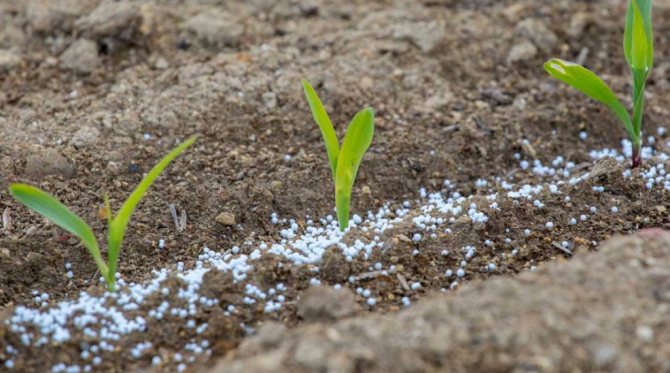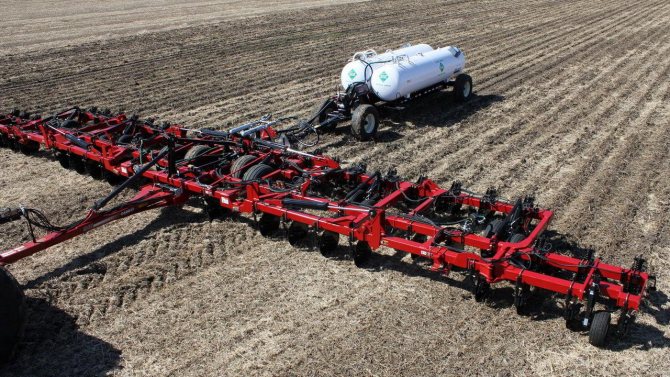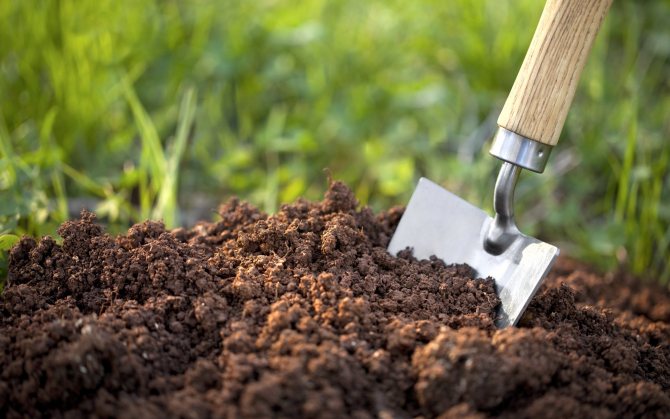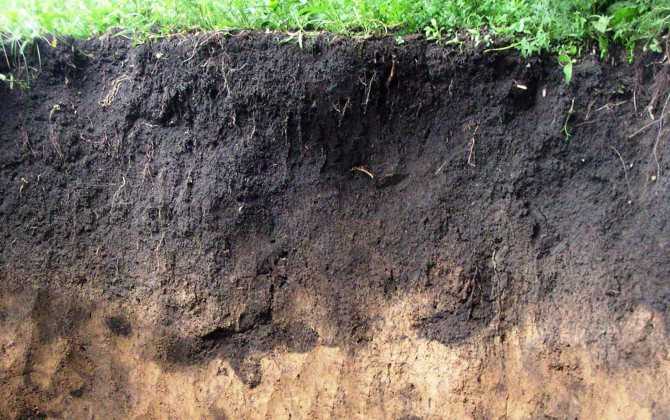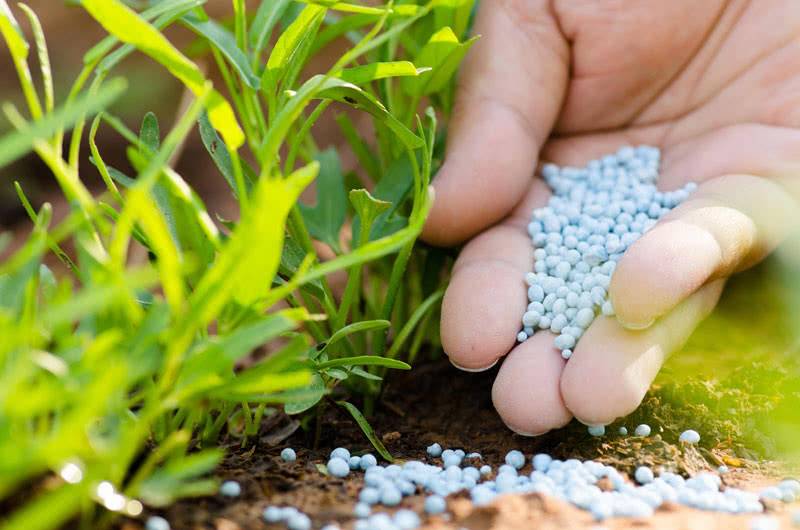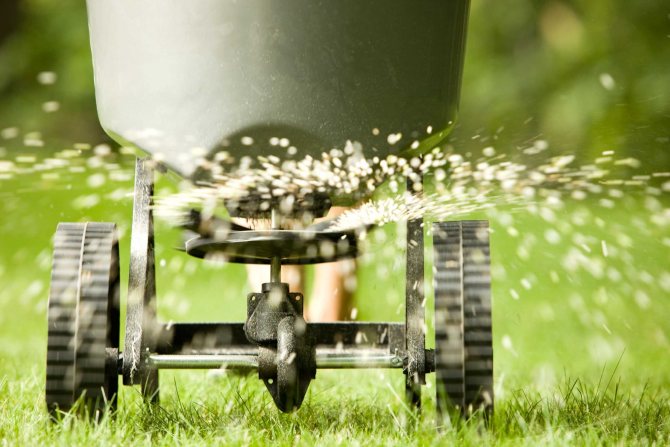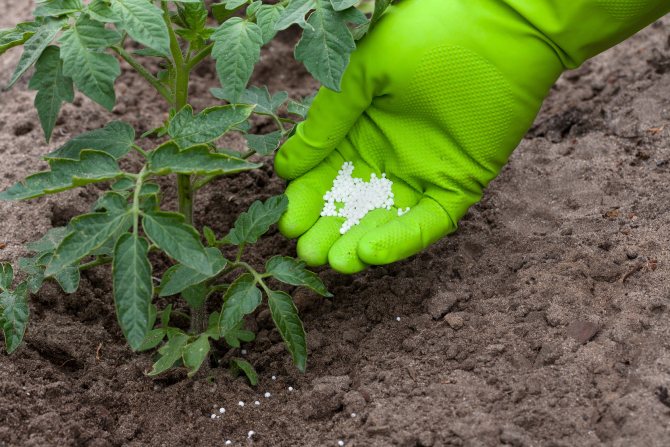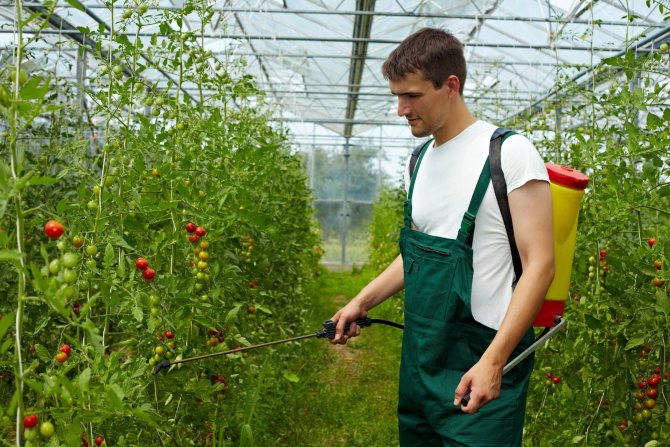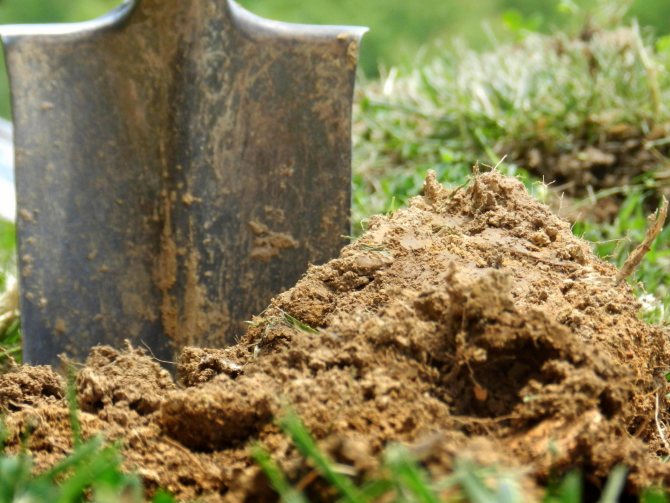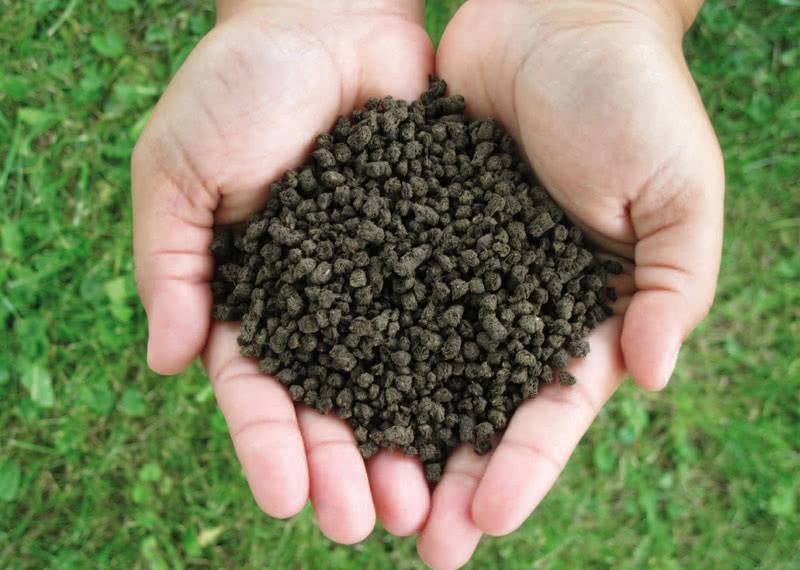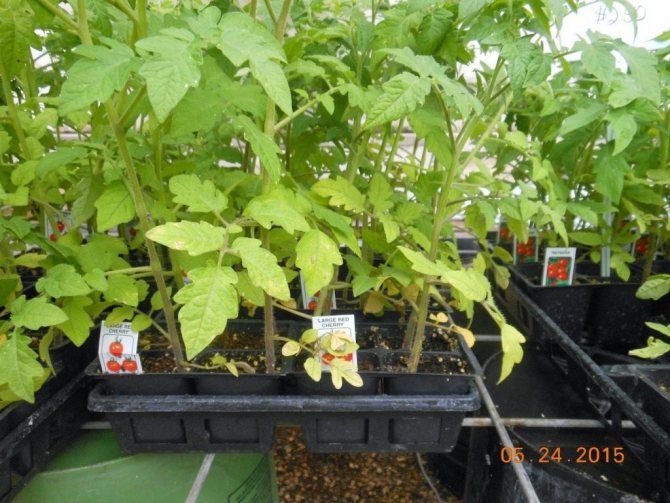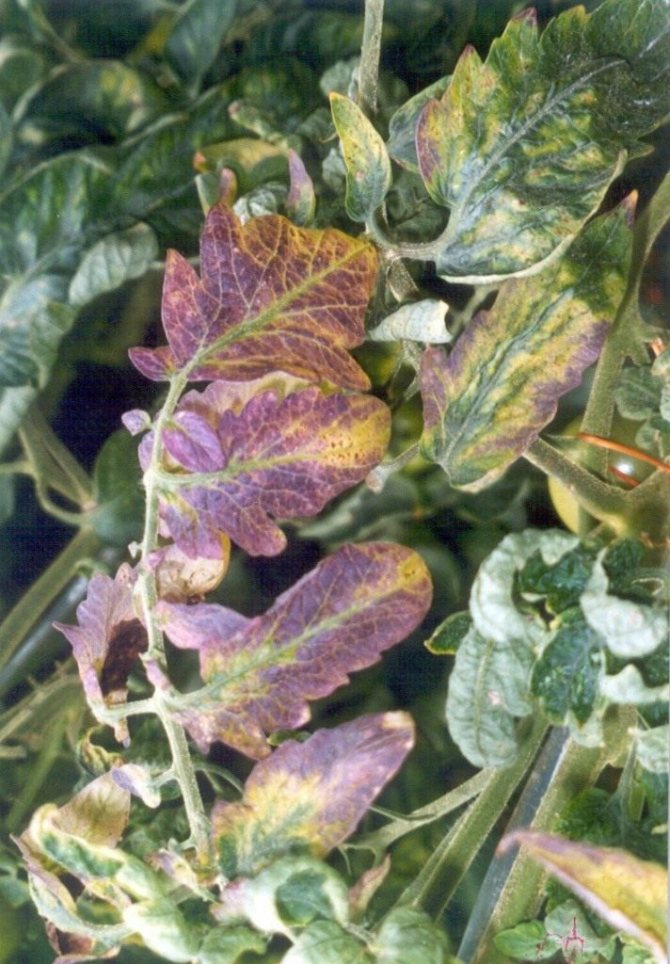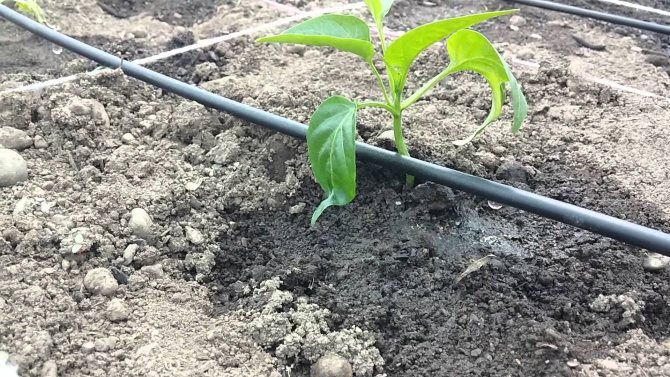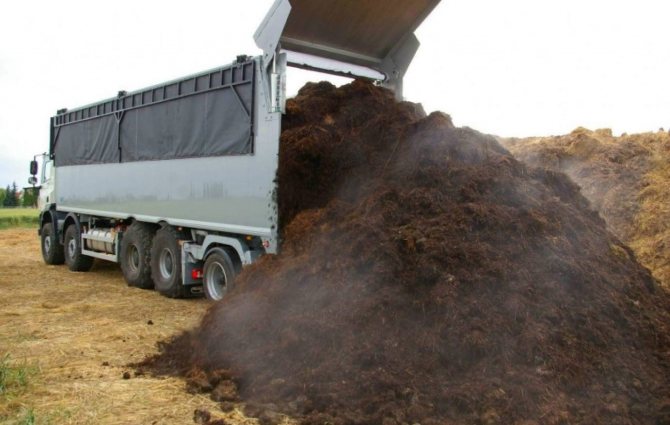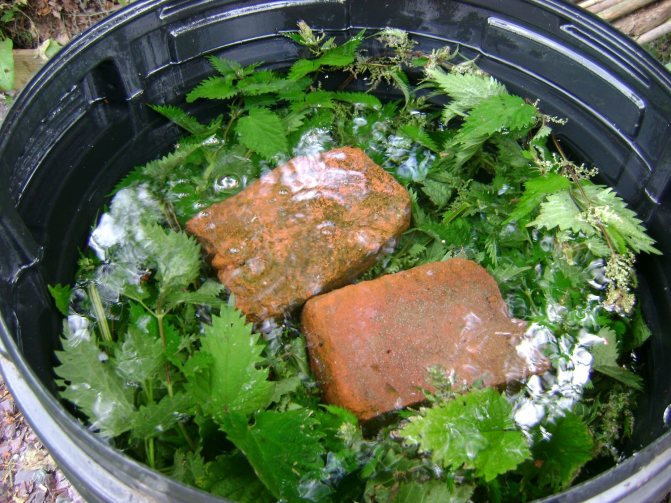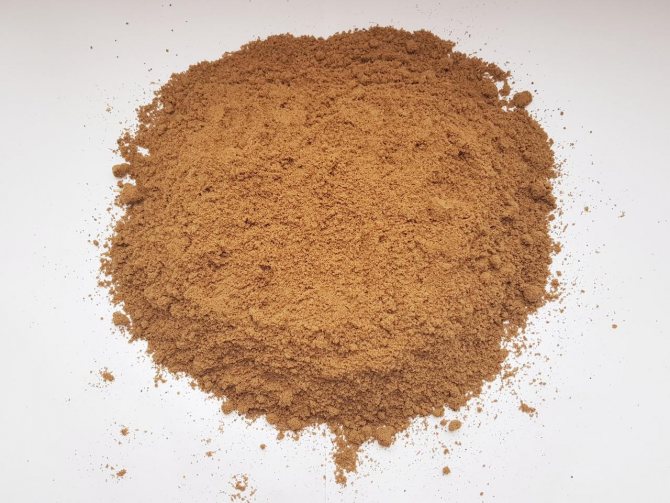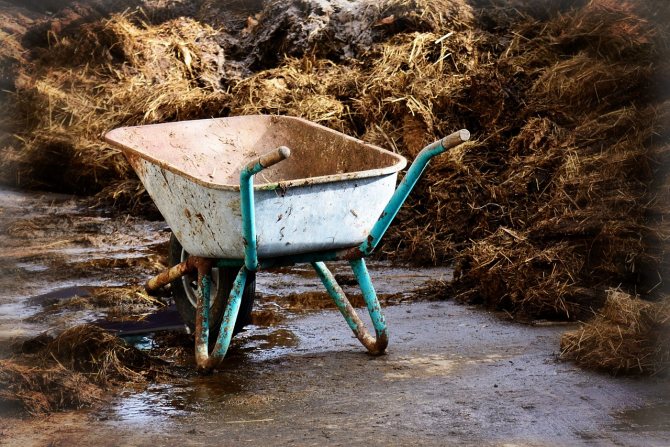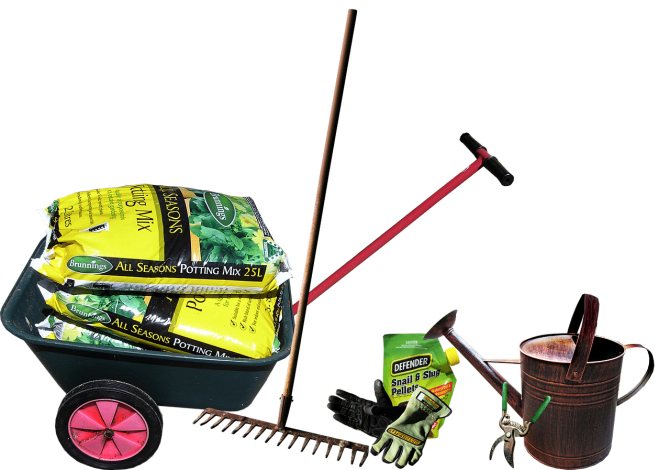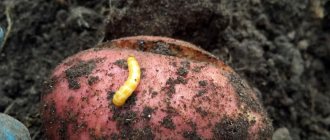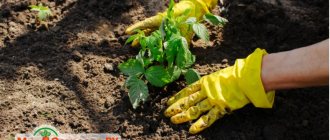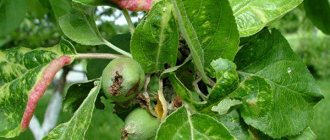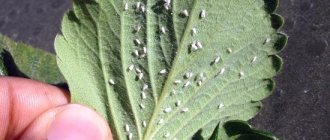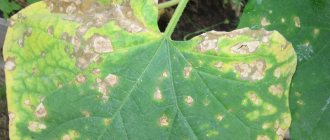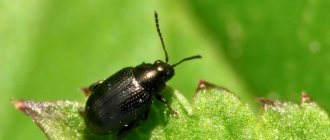Mineral fertilizers are substances consisting of inorganic components. It is customary to use them in agriculture, because they are available and have a positive effect on plants. The main components of mineral fertilizers of the soil are salts, acids and oxides, due to which they do not have a carbohydrate skeleton, which means that they have a more favorable effect on the harvest.
It is very important to take into account that the use of mineral fertilizers (fats) should not exceed the existing norms, as this can provoke the appearance of harmful consequences. The composition of mineral fertilizers can be simple or complex. The former include unilateral tucks, which consist of only one basic element. Their use is necessary only when the plant lacks a natural substance and has to be added artificially.
In order to correctly buy raw materials for a garden and a vegetable garden in a private house or for a summer residence, it is important to learn how to understand their varieties and features.
Fertilization methods
According to the methods, the main and pre-sowing fertilization is distinguished, as well as the current root and foliar dressing. Processes differ in application time, depending on the characteristics of the cultivated crops, soil characteristics and climatic zones.
The main
This method is applicable in autumn or early spring before sowing. In order for the plants to receive the maximum nutrients, the application rate of basic fertilizers should be at least 2/3 of their total amount.
Before sowing, manure or other organic matter, as well as minerals, are introduced.
Manure, humus, peat are usually applied in autumn. The same applies to ammoniacal nitrogen fertilizers, phosphorus and potassium fertilizers (for heavy soils), which need time to dissolve.
Nitrate nitrogen fertilizers, potassium (on light soils), well-rotted compost are usually applied in the spring.
Strawberries at home all year round! These veneers are 100 times better than a false jaw! And there are pennies! Up to 15 kg of strawberries every month! False dental veneers for a penny! Up to 15 kg of strawberries every month! Famous overhead veneers are now in Russia!
Preseeding
This method consists in applying fertilizers in parallel with planting. It helps the seeds to successfully germinate and start growing, and also protects against diseases and pests.
Seeding top dressing contributes to the formation of a developed root system, protects against adverse weather conditions. However, when applying fertilizers, be careful not to let the seed come into contact with them. To do this, they are separated by a small layer of soil. This allows the nutrients to work more efficiently.
The dose of pre-sowing top dressing should not exceed 9% of the total. Usually, forfor- and nitrogen-containing fertilizers are applied, less often - also potash fertilizers.
Attention! It is necessary to strictly observe the dosage of fertilization in the pre-sowing method.
Deficiency of nutrients, for example, phosphorus, at the phase of emergence of the first shoots will negatively affect the quantity and quality composition of the future crop. The oversaturation of the soil with macronutrients can completely destroy all crops.
Top dressing
Current dressings are carried out during the entire growing season.Designed to enhance the nutrition of garden crops at the stages of maximum consumption of macro- and microelements.
All types of fertilizing are essential in increasing the productivity of plants. Root or foliar feeding enhances the effect of basic fertilizers. And the right combination gives crops the full range of nutrients needed for growth and development.
The effectiveness of top dressing as a method of fertilizing is determined by the type and form of release of nutrient compositions, the degree of soil moisture, and agrotechnical conditions.
Strawberries at home all year round! These veneers are 100 times better than a false jaw! And there are pennies! Up to 15 kg of strawberries every month! False dental veneers for a penny! Up to 15 kg of strawberries every month! Famous overhead veneers are now in Russia!
Plant nutrient requirements
Initially, plants need fertilizers and feeding, not soils. Therefore, the choice of the method of fertilizing will depend on the needs of plants in certain substances, depending on the period of development.
Nitrogen
In the spring, when the intensive growth of shoots and leaves begins, all greens need nitrogen nutrition. Some of its plants are taken from the air. But this is not enough for an annual harvest. Therefore, fertile seasons alternate with infertile ones if the land is not nourished.
Nitrogen affects the amount of green mass, the thickness of the shoots. Mineral fertilizers - complex or single-component fertilizers provide a sufficient amount of nitrogen.
Nitrogen is also found in organic matter - manure or bird droppings. You can choose any method of applying organic fertilizers to the soil:
- In the form of fresh manure
In this case, you will have to comply with the termination time. It is recommended to use fresh manure in the fall, so that during the winter it overwhelms, and soil microorganisms process organic matter into substances available to plants. This method is the safest, because it will not harm the root system - it will not burn it.
- Compost
The most useful fertilization method. It consists in the preliminary maturation of organic matter in special piles under the influence of high temperatures. The temperature naturally rises to 75 degrees - the compost "burns".
To speed up the maturation process, some experienced gardeners add bacteria concentrates to help process manure.
- Slurry
This is an infusion of fresh manure followed by dilution with plenty of water. While the liquid is standing, excess nitrogen evaporates and the solution becomes safe for the root system. Next, the base is once again bred and the plants are watered at the root.
The nitrogen requirements of all plants are different. On average, legumes require less nutrients because they are a source of nitrogen themselves and are sometimes used for green manure. Vegetable crops need more, fodder crops even more, especially large plants - corn and sunflower.
Nitrogen application methods:
- amide form - turns into an accessible form in 1.5 months, not suitable for urgent use;
- ammonium form - has a validity period of up to 2 weeks, it is recommended for embedding in the ground;
- nitrate - instantaneous, in a day you can eliminate the deficit by foliar fertilization;
- UAN is a urea-ammonia mixture that contains all three nitrogen variants, the nitrate mixture is immediately available for nutrition, the rest are consumed gradually, it can be introduced by digging with the expectation of next year's harvest.
Video: How to apply nitrogen fertilizers
Any of the substances described can be used, depending on the degree of deficiency.
Potassium
It is also quickly consumed, especially during the formation of flowers and ovaries. There are two ways to apply potash fertilizers:
- in organic matter - manure, compost, green fertilizer;
- in mineral mixtures.
Organic matter is mixed with earth in autumn or spring. Mineral fertilizers can also be added either before sowing or after harvesting. Foliar dressing is needed:
- if there is a deficiency of a substance that is determined by the leaves;
- no fertilizers were applied in the spring, and the autumn amount was not enough;
- stopping fruit ripening - poorly poured or not ripening.
On light soils, a fractional fertilization method is used.
Phosphorus
It is applied in the form:
- phosphate rock;
- superphosphates;
- double superphosphates.
Phosphate rock is a long-lasting fertilizer, rarely applied - once every 4 - 5 years... You can quickly feed the plants with phosphorus with the help of superphosphates. They are applied in full in autumn or spring.
Phosphorus additives are embedded deep into the soil. They do not have great mobility, so they are not washed out by rains.
The amount of mineral fertilizers - calculation
The easiest way to apply fertilizers is to use complex mixtures. The amount of substance in them has already been calculated. Self-mixing of components is available to experienced gardeners, who take into account the type of soil on the site, the level of acidity and plan in advance the amount of harvest that can be obtained from the site.
You can experiment with one-component formulations according to the following rules:
- For autumn fertilization, mix potassium and phosphorus 5 parts each, nitrogen - one part.
- For spring termination - in equal parts nitrogen, potassium and phosphorus.
To facilitate the counting process, the amount of substance in a tablespoon and a match box is given.
| Fertilizer name | Amount in a tablespoon | Quantity in a matchbox | Quantity in a glass |
| Urea (urea) | 10g | 13g | 130g |
| Ammonium nitrate | 17g | 17g | 170g |
| Sodium saltpeter | 18g | 24g | 240g |
| Calcium nitrate | 15g | 20g | 200g |
| Superphosphate (powder) | 18g | 24g | 240g |
| Superphosphate (granules) | 17g | 22g | 220g |
| Phosphorite flour | 26g | 35g | 350g |
| Potassium chloride | 14g | 18g | 180g |
| Potassium sulfate | 20g | 26g | 260g |
| Potassium salt | 17g | 22g | 220g |
Types of dressings
In addition to the main root and foliar feeding, fertigation and hydroponics are also distinguished. Each species has its own specifics and features.
Root
It is produced superficially or subsurface. The nutrients from the soil are absorbed by the plant root system. Such dressings are indispensable on light soils, from which useful elements are rapidly washed out.
Fertilizers during root dressing are applied in dry or dissolved form. The most effective are liquid dressings in early spring, during the period of growth and flowering of garden crops.
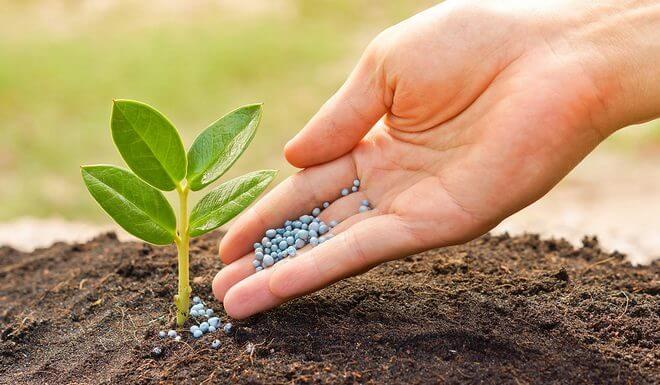
Foliar
The assimilation of nutrients occurs by their absorption by foliage and plant stems. This type of feeding is indispensable in case of rapid wilting of plants, when they are no longer able to receive nutrition through a damaged root system. They perfectly compensate for micronutrient deficiencies.
Often, foliar feeding is combined with the treatment of plants from harmful insects. A special effect is achieved by combining root and foliar dressings.
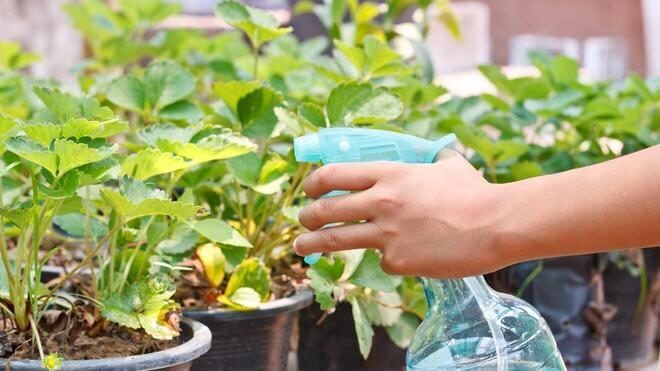

Fergitation
The introduction of nutrients along with water. With this method, the loss of fertilizer is excluded. It is 100% assimilated. It has been proven that plants for normal growth require not just water, but a nutrient composition with a clearly dosed amount of fertilizers.
This type of feeding combines root and foliar fertilization methods, because nutrients are absorbed by both leaves and rhizomes. In addition, the effectiveness of fertilizers increases when applied in liquid form.
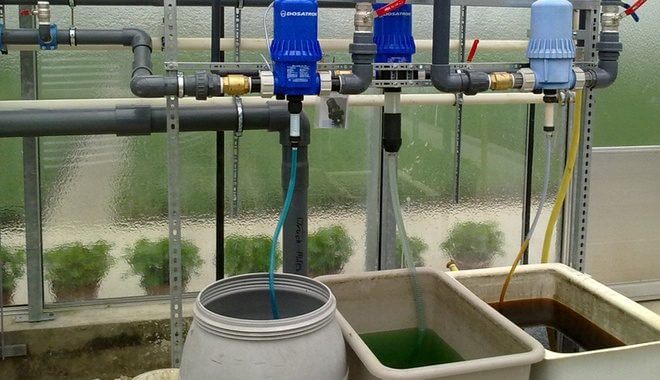

Hydroponics
A method of growing crops without using traditional soil. Nutrition goes directly to the root system. It is efficient, economical and allows to mechanize the process of growing horticultural crops.
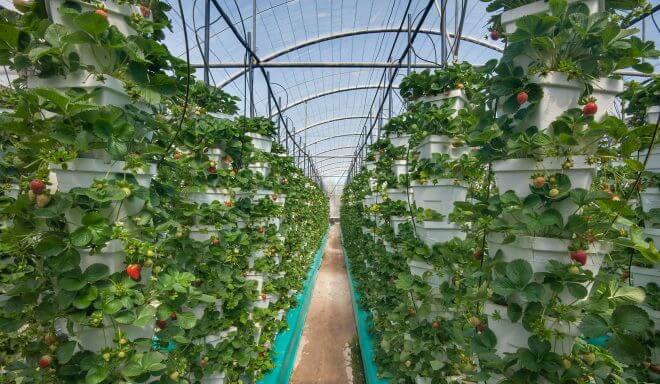

Storage rules for mineral fertilizers
In order for the effect of using special dressings to be as effective as possible, it is necessary to follow the rules for storing mineral fertilizers. They are as follows:
- The moisture content in the storage should not exceed 40%.
- Outdoor storage and cold floor storage is prohibited.
- The air temperature should not fall below 0 and rise above 27 degrees.
- Fertilizer storage rooms should be waterproof and have solid walls.
- You need to store different types of fertilizers separately; for this, you can make special partitions.
- Ammonium nitrate is fire hazardous and cannot be stored in wooden warehouses.
Storage conditions directly depend on the chemical characteristics of agrochemicals. They are capable of reacting differently to external factors, so this moment should not be overlooked when preparing a room for storing mineral fertilizers.
Application rates and dosage
When determining the optimal rates of fertilization, the yield of a particular crop and the amount of nutrients it needs for vegetation are taken into account. In addition, it is important to know the characteristics of consumption and the degree of assimilation of organic matter and mineral elements.
The most demanded methods for calculating the application rates of top dressing are field, obtained empirically. Mathematical methods are usually far from reality and are based on dry theory.
The amount of fertilizer applied is largely determined by the type of soil. And when introducing mineral complexes, they usually take into account not only the need for specific plants, but also the condition of the soil. So, depleted soil requires twice as much minerals as light and fertile.
However, you should not get too carried away with fertilizers, because their excessive amount negatively affects the growth of garden crops, the quality and environmental safety of fruits. So, the lack of phosphorus in the soil is increased gradually - by introducing soluble forms of fertilizers during the entire warm period.
Strawberries at home all year round! These veneers are 100 times better than a false jaw! And there are pennies! Up to 15 kg of strawberries every month! False dental veneers for a penny! Up to 15 kg of strawberries every month! Famous overhead veneers are now in Russia!
Content:
- Dosage calculation
- Features of the use of different fertilizers
- Practical advice
The calculation of the doses of mineral fertilizers is based on the data of reference indicators for specific crops. The dosage is usually calculated for large areas on which one type of plant is cultivated, but there is no fundamental difference between the percentage of fertilizing per 1 hectare and 1 meter. The main thing is to observe the proportions and take them into account for each active substance in the composition. Typically, reference data indicate the amount of fertilizer in kg / ha. For example, N60P90K90 indicates that 60 kg of nitrogen, 90 kg of phosphorus and the same amount of potassium are applied per hectare of land.
Application technology
The aggregate state of fertilizers usually determines the technology of their application. For liquid and solid dressings, it will be different.
For liquid
Liquid fertilizers are applied by root and foliar methods. However, the greatest effect can be achieved by a competent alternation of these two options.
Root dressing is designed to provide garden crops with a full range of nutrients necessary for harmonious development. For example, at the beginning of the season, when plants need nitrogen, this macronutrient is added in a diluted form by the root method. Up to 30% of the total amount of nitrogen is added in liquid form.The same goes for potassium and phosphorus. The latter are better absorbed in liquid form.
But microelements are better applied by spraying - this increases the efficiency of their use.


Foliar top dressing (spraying) serves as an addition to the basic and mandatory measure in the withering of plants, when the root system is no longer able to provide the culture with nutrients.
Spraying sugar beets and potatoes with phosphorus and potassium compounds 30 days before harvesting increases the outflow of nutrients from the foliage to the fruit. Sugar content increases in beets, and in potatoes, the percentage of starch.
Note. The timing of root and foliar dressing is determined by the agricultural technology of each specific crop.
For solid
It is recommended to plant solid fertilizers in moist soil (you can spill it after spilling) to a depth of at least 15 cm. It is this depth that is considered optimal, since the root system of most plants is located in it. It is best to dig after spreading fertilizers around the site.
With a shallow planting (up to 5 cm) or just placers, top dressing does not reach the plant root system and does not bring the expected result.
When applying solid dressings, the speed of movement of nutrients is taken into account. The most mobile are nitrates, and the slowest is phosphorus. The speed depends on the composition and properties of the soil, the quality of feeding. The process takes place faster on light soils, slower - on alumina, loam.
Strawberries at home all year round! These veneers are 100 times better than a false jaw! And there are pennies! Up to 15 kg of strawberries every month! False dental veneers for a penny! Up to 15 kg of strawberries every month! Famous overhead veneers are now in Russia!
How to fertilize the soil in spring if there is no manure?
In the absence of organic fertilizers, use mineral fertilizers. Don't be afraid that your vegetables will have high nitrate levels. If you do not abuse, but use the recommendations printed on the packaging, then nothing terrible will happen. An increase in nitrates can also be obtained with too much use of organic matter. If you are an ardent opponent of mineral fertilizers, then you can use sod land during planting.
Only this work is very laborious. The essence of this method is that it is necessary to dig a layer of turf deep on the bayonet of the shovel and beat the ground on the shank of the shovel directly onto the garden bed (or into a prepared container), and then dig it up shallowly. Of course, you cannot plant a large area in this way, but it is quite possible to cook a couple of beds. In the spring, you can bury last year's grass and leaves directly into the garden bed (just not from city streets) - gradually rotting in the ground, they will provide plants, albeit inadequate, but with some kind of nutrition. Ash should be added there. The best substitute for manure will be compost, but the process of preparing a full-fledged compost is very long - two or three seasons, and therefore, if you have stress with manure in the future, then take care of its preparation now.
Types of fertilizers, methods and timing of application
In personal plots, organic matter and minerals are usually used. They all have their own specifics and differ in time of application.
Manure
Fresh manure contains many weed seeds, therefore it is not recommended to apply it. The exceptions are cucumbers, pumpkins and zucchini - crops that are responsive to fresh organic matter. It is laid in the beds in the fall when digging, and in the new season it is also used as mulch. However, well-decomposed manure is especially appreciated. It is brought in in the fall or early spring for digging. Consumption - 6 kg per meter. The frequency of introduction is once every 3-4 years.
Humus
Environmentally friendly leaf humus, formed by overheating of foliage and tops, is very much appreciated.You can lay this organic matter both in spring and in autumn before digging. A well-decomposed fertilizer begins to immediately release all nutrients to the soil. Fertilizer consumption - up to 3 kg per meter. Good for fertilizing indoor plants.
Litter
A highly concentrated top dressing that is best used after pre-drying. The droppings are laid in the ground in the fall, since nutrients need enough time to transform into a form that is convenient for plants to assimilate. The optimal application dosage is up to 4000 g per meter. The frequency of application is once every 5-6 years.
Urea
Contains up to 45% nitrogen, readily soluble in water, prone to caking. It is introduced in the spring, when the need of plants for this macronutrient increases. Dry - before digging (consumption - 15 g per meter), dissolved - before flowering (consumption - 45 g per bucket of water).
Superphosphate
This fertilizer is applied in the fall for digging, added to the compost to give it greater nutritional value, fertilize garden crops at the stage of flowering and fruit setting. The consumption of the drug is 50 g per meter when digging. To feed plants during the season, Superphosphate is diluted in water according to the instructions on the package and taking into account the needs of specific plants.
Potassium sulphate
An indispensable fertilizer before the beginning of flowering garden crops. In dissolved form, they are introduced from late spring to mid-summer. Dry - for autumn digging. Fertilizer consumption - 20 g per meter, in dissolved form - according to the instructions on the package.
Complex fertilizers in spring
Complex fertilizers include the following products:
- Potassium nitrate. Contains 45% potassium and 13% nitrogen. It is a water-soluble substance, it is considered a universal fertilizer for all crops growing on various types of soil. Top dressing is used during the ripening period of root crops, when it is necessary to limit the nitrogen content and increase the potassium level.
- Ammophos. It contains 50% phosphorus and 10% nitrogen. The mixture dissolves quickly in water and is well absorbed by plants. It can be used as the main top dressing, which increases the growth rate of horticultural crops and fruit ripening. During storage, the product does not absorb moisture and does not clump.
- Nitrofosku. The composition includes potassium, nitrogen and phosphorus, mixed in equal proportions. The tool is used for root feeding when planting a plant. This composition can be applied to any type of soil.
- Nitroammofosk. In addition to 3 main inorganic substances, it contains sulfur. There are several types of product that differ in the percentage of beneficial compounds. The product is soluble in water, it is allowed to use the composition when growing any crops. The powder is applied to the soil in the autumn.
Fertile properties of different types of soil
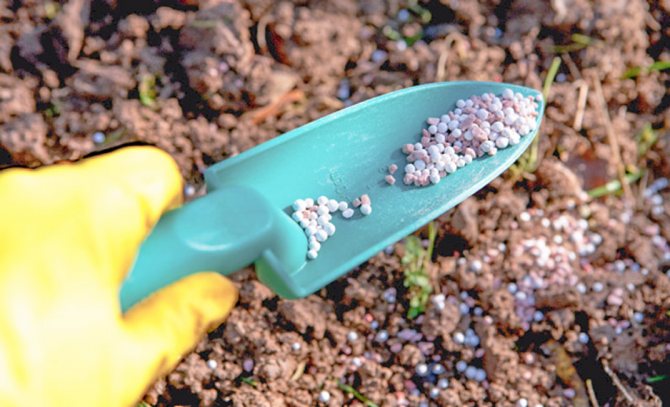

Clay soil has 50-80% looseness. Holds moisture well, poor air exchange due to density. They cultivate with the help of sand, sawdust, organic matter for digging. The top layer is poorly warmed up. The medium is usually acidic, alkalization is used with lime, chalk, eggshells. Drainage is installed to dry the soil. Has a yellow-brown color, elastic (like plasticine). The decomposition of microorganisms slows down, the formation of microorganisms, humus is hampered.
Loamy - universal for growing all types of plants, fertile, loose, moisture is well distributed, saturated with microorganisms, earthworms. It is black. Optimal acidity. Why periodically need to apply fertilizer to such soil? To provide enough nutrition for the plants planted in the next season. Cultivated lands require constant filling with complex fertilizing.
Sandy soil is the most difficult, not suitable for use as planting material.It is a loose, loose soil that does not retain nutrients in the upper layers. Increased air exchange, is not fertile, difficult to cultivate. In sandy soil with preliminary cultivation, carrots, potatoes, beetroot, beans can grow. How to fertilize this type of land? A large amount of organic matter: manure, humus, compost, green mass, mulching.
Sandy loam soil has a light texture. It is able to pass air, retains heat, moisture and applied fertilizers. It is necessary to select varieties, types of plants, garden trees that love such soil. It will not be difficult to fill this soil with minerals and organics in a quality manner.
Calcareous, boggy soils are considered complex, not fertile. Although here people also manage to grow plants, garden trees. These soils require constant filling with nutritious complex fertilizers. Marsh is acidic, and calcareous is slightly acidic. Therefore, it is necessary to select the appropriate crops, constantly maintain the required level of acidity and fertility, preferably initially with natural feed.
When is the main period and its significance
Caring gardeners and farmers know that if fertilization is not carried out after the season has ended, then next year a strong harvest should not be expected. The harvest has been collected, the fields, plantations are harvested, it's time to fertilize the land, to feed the depleted planting soil. Large agricultural plots are restored mainly with mineral (chemical) substances. Modern fertilizers allow you to choose fertilizer complexes suitable for certain crops.
The use of industrial mineral salts has repeatedly proven its effectiveness, safety for the environment and human health. They are irreplaceable and in demand in many developed countries. The rate of application of mineral substances in relation to the area of the planted area must be strictly calculated. For private gardens, two types are used: organic, mineral. It depends on the preference of the gardener, the farmer. Organic can also harm plants, inhabitants of the soil, if you do not follow the norm.
The importance of pre-sowing (sowing) feeding
When planting crops (seeds, seedlings) in spring, you need to know when to apply, in what volume, which nutrients. The moment of plant adaptation, seed germination is very important. Nutrients must be available to the immature root system. Gradual development, the growth of culture requires certain mineral - organic components. In agriculture, stage-by-stage terms for feeding crops are strictly adhered to.
If the land is fertile, it cannot be oversaturated with the substances it contains. This can completely change the development of the plant, badly affect its fertility. How to fertilize the soil layer when sowing, planting seedlings at the initial stage? Fast-dissolving, phosphorus-containing feed, positively affecting the formation and development of roots. This is a root application of fertilizer or into a hole, along with planting a crop. In agriculture, a combined technique is used, which simultaneously sows seeds, digs up the necessary layer of earth (25-30 cm), and fills the soil with top dressing.
It is necessary to ensure that the culture receives plenty of water, light, oxygen. An excess of water can disrupt the air exchange of the soil, cause rotting of the culture. It is important to competently adhere to already existing agricultural schemes (feeding, planting, watering) for growing certain crops. It is necessary to follow the rules for dosing with nutrients and know how to fertilize soil with certain natural properties.


